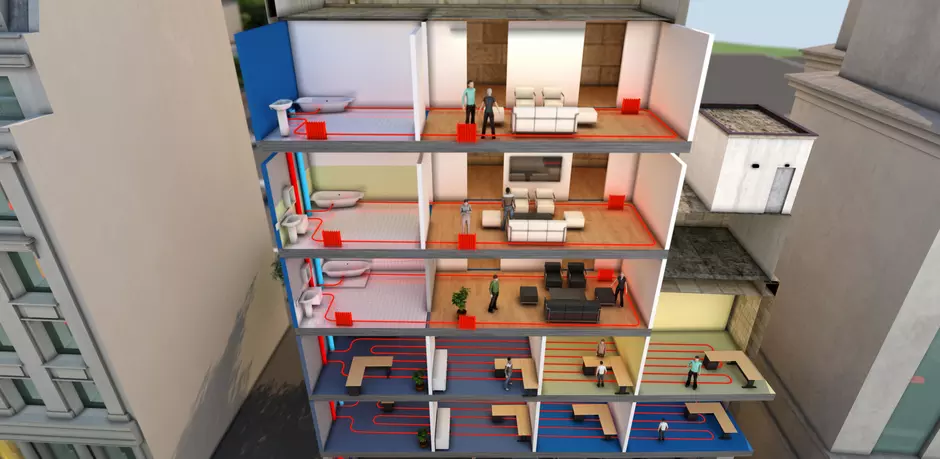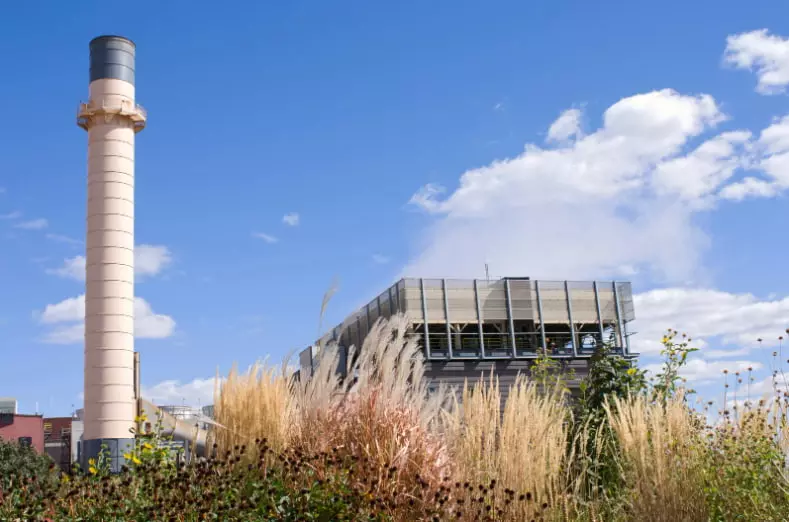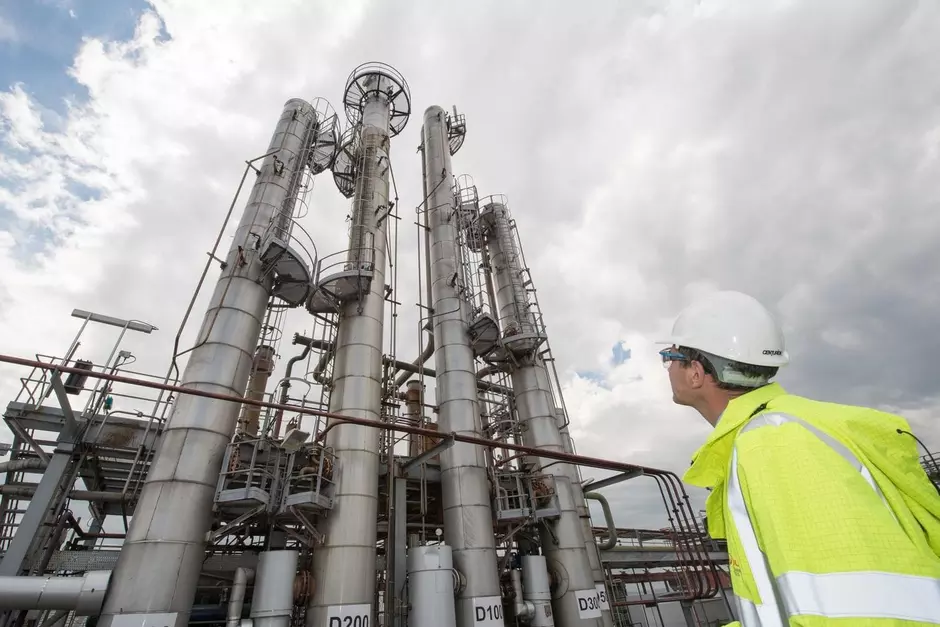What is a HIU?
On the surface Heat Interface Units (HIUs) appear very similar to your standard boiler, however, play a very different role in District Heating as explained below. HIUs play a vital role as the pivot between a central boiler and the hot water outlets in an individual apartment. Said outlets could include: taps, showers, radiators, or any outlet delivering heat. By adopting a central source of heat, apartment complexes create both energy savings and cost savings for the users.
How do HIUs work?
HIUs (Heat Interface Units) are installed within individual properties in a complex in the same manner as a boiler would be. The multiple heat interface units are then connected to one central boiler through a system of pipes. Utilising either a one or two-plate heat exchanger heat is transferred from the central boiler into instantaneous heating and hot water to be used at the individual's discretion.
What are the benefits of using HIUs
The UK government is keen to progress the development of district heating systems, and HIUs continue to play a crucial role in the country's progression due to superior energy efficiency. Compared to traditional heating systems, HIUs and district heating as wider whole present greater benefits to all involved via cost savings, but more importantly maximised energy savings. Heat interface units can have the following advantages:
Achieve low-carbon and renewable energy targets and requirements
- Despite the use of a central gas boiler, district heating presents a feasible opportunity to use renewable energy sources such as CHP, biomass, solar or heat pumps.
- As district heating provides instant hot water on demand, no energy is wasted as during heat build up or dissipation.
- HIUs are very responsive, providing instant supply on-demand Energy bills should be decreased as communal heating is all about improving energy efficiency, CO2 reduction and saving on running costs. Eliminating the gas supply alleviates any worries about carbon monoxide emissions. Occupants have good visibility of energy consumption which promotes energy saving.
Reduced installation and maintenance requirements
As district heating is largely focused on a central plantroom and one boiler, maintenance and servicing become considerably easier and cost-effective. Installing boilers in each property would be highly cost inefficient in comparison to one highly efficient central boiler. Not to mention the labour requirements and time-consumption that can be retained. Following all initial installations, the maintenance of a HIU is arguably more straightforward compared to a gas boiler.
Get in Touch
If district heating appears to be a viable route for you then we strongly urge that you seek out expert knowledge and advice to ensure your network/scheme is built and managed to provide the highest levels of efficiency.






